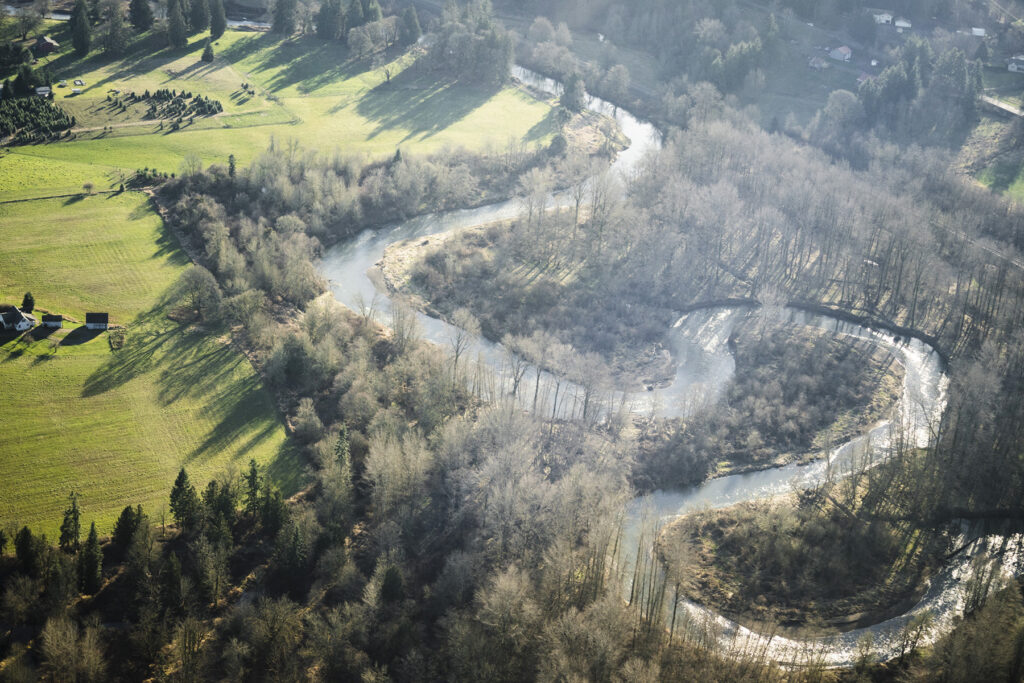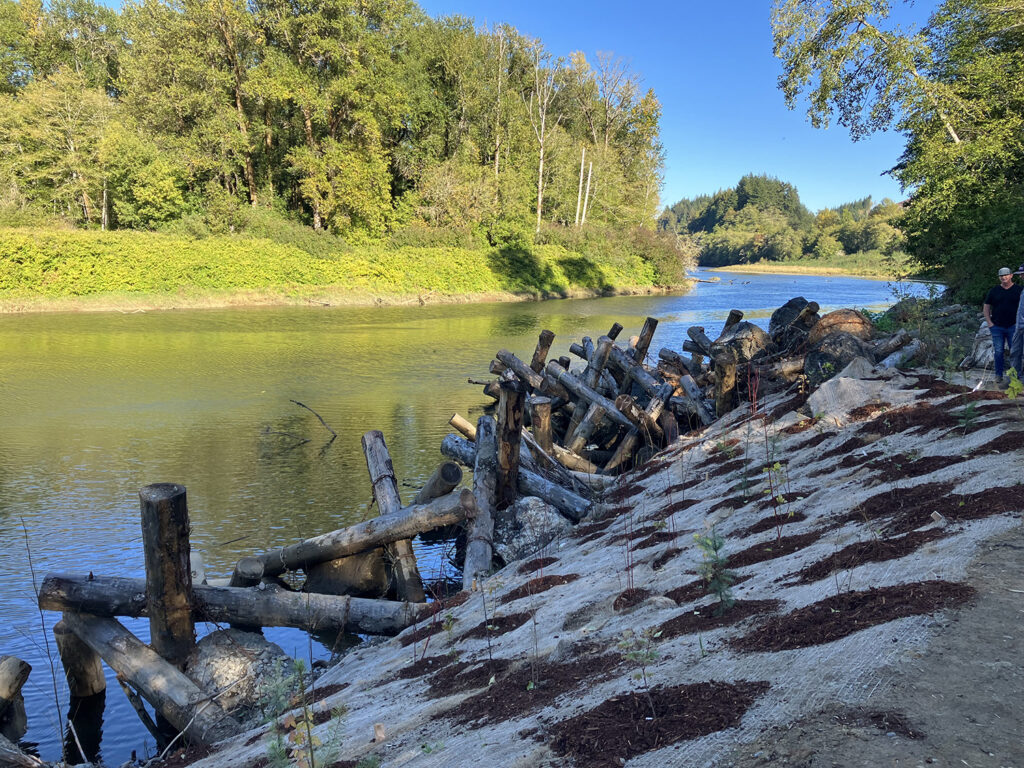The Chehalis Basin Strategy
Year in Review
2023
2023 was an exciting year for the Chehalis Basin Strategy. We celebrated a decade of progress that has translated into more than 140 on-the-ground projects. And, thanks to these successes and the groundwork we laid with foundational research studies and analysis, we reached a huge milestone: transitioning our focus toward developing an integrated, long-term Basin-wide plan to restore aquatic habitat and protect against catastrophic flood damage.
Now, the Chehalis Basin Board is working to finalize the long-term plan in cooperation with the people who live in and love the Chehalis Basin.
Introduction
Letter from the Director
This is incredibly meaningful work, and I am excited about this new opportunity and challenge!
I have a deep connection to the Chehalis Basin having spent years exploring and building positive relationships with the people who live here. I have seen firsthand the impacts flooding has had on our communities, as well as the cultural cost of habitat and fish declines. We are all tied to the health of this region, and I’m confident in our ability to reach consensus solutions about the path forward together.
Before joining the Office of Chehalis Basin in November 2023, what struck me about the Chehalis Basin Strategy was its emphasis on collaboration. People from across the Chehalis Basin—an enormous watershed with many different communities and interests—are coming together to create a solution that is bigger than what anyone can accomplish alone.
This is why I’m excited to lead the Office of Chehalis Basin and support the incredible staff, board members, partners, and community members who make this work, and a resilient future, possible.
– Jeff Zenk, Director, Office of Chehalis Basin
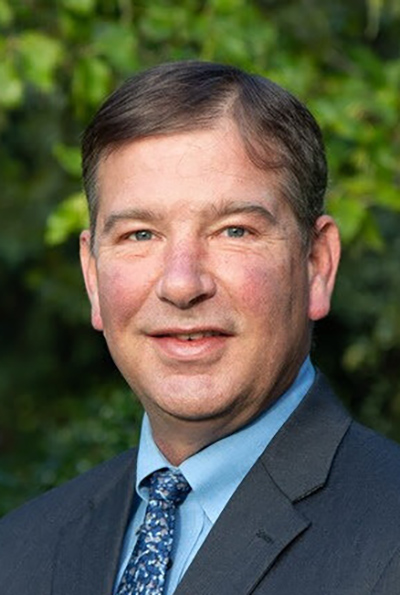
About the Chehalis Basin Strategy
The Chehalis Basin Strategy is a network of partners and projects hard at work to make the Chehalis Basin a safe, healthy, and abundant place to live—for people, fish, and wildlife.
The Strategy is administered by the Washington Department of Ecology’s Office of Chehalis Basin (OCB) and led by the Chehalis Basin Board—a group of leaders with diverse interests and perspectives across the Basin.
Through the Strategy, OCB invested nearly $152 million to complete more than 140 projects that are delivering on-the-ground impact. Today, the Board is working to create an equitable, integrated, and sustainable long-term plan for restoring aquatic life and reducing flood damage that provides net improvement over the next 30 years.
2023 At-A-Glance
In 2023, we kicked off a new biennium of projects, launched new programs, and continued moving significant bodies of work forward.
Key Highlights
To help meet the growing and imminent need for erosion control across the Basin, we launched a new erosion management program and have already funded 8 projects since 2021.
We launched a new technical support program to help our partners secure federal grant funding to advance their Strategy projects.
We made progress on an initial suite of recommended actions that will be considered to reduce flood damages across the upper Basin with or without building a dam.
We continued working with the cities of Aberdeen and Hoquiam and leveraging federal funding to advance the North Shore Levee Project. This project received $18.5 million from the state legislature for 2021–2023 biennium.
Partners at the Chehalis River Basin Flood Control Zone District continued to refine the design and mitigation plan for the proposed Chehalis River flow-through dam for flood-control, including facilitating conversations between state and federal agencies, Tribal representatives, and the local community.
We collaborated with the Chehalis River Basin Flood Authority and local partners to initiate and build more than 16 projects to protect community infrastructure across the Basin, working closely with local jurisdictions on proactive investment planning for the region’s future.
The Aquatic Species Restoration Plan expanded its restoration efforts— completing construction on three projects, constructing more than 6 additional projects, and maintaining a total of 18 active projects that improve habitat and knowledge across the Basin.
We completed Phase Two of the Skookumchuck Dam study, which outlined the potential costs and impacts of various options under consideration.
The Chehalis Basin Board made headway developing and finalizing a long-term integrated strategy to build resilience and ensure a healthy Chehalis Basin for generations to come.
A Long-Term, Integrated Strategy
The Chehalis Basin Board is working to create an equitable, balanced, and sustainable long-term strategy that provides net improvements for Chehalis Basin people and aquatic life during the next 30 years.
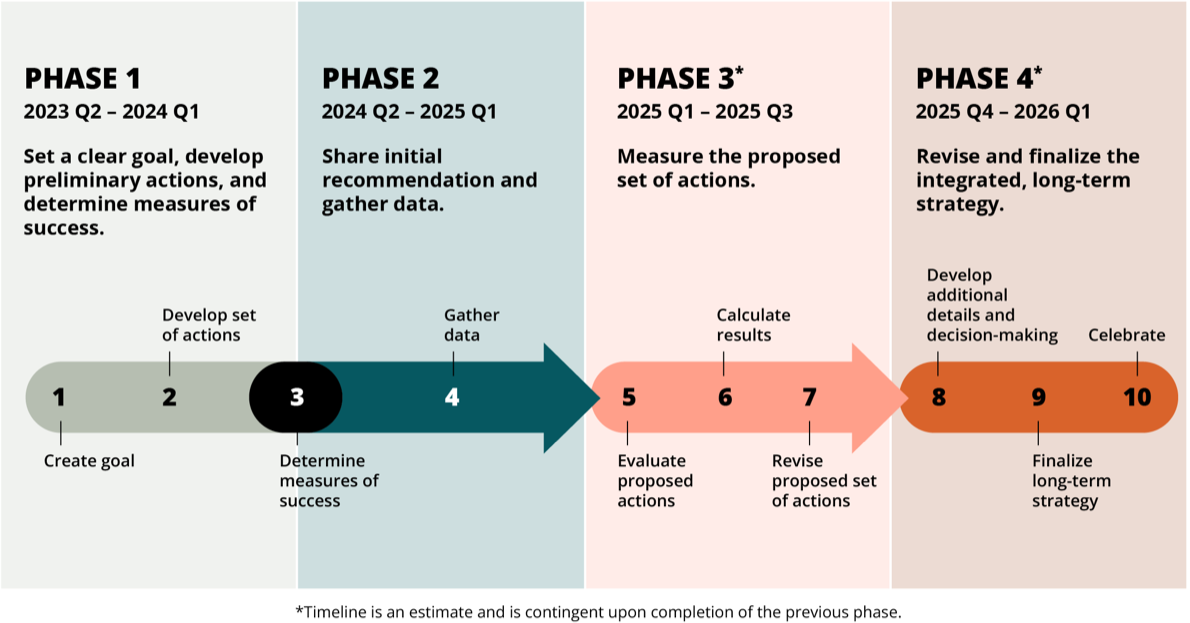
In 2023, the Board created goals, developed preliminary sets of actions, and determined evaluation factors. All of the Strategy’s projects, near- and long-term, are part of this overarching effort to protect and restore the Chehalis Basin for generations to come. Read on to learn more about on-the-ground impact in 2023.
It’s been a great year for the Chehalis Basin Board. We’ve come together across perspectives and across Strategy programs to truly move together toward an integrated, long-term strategy. I’m thankful for the continued commitment of our board members to take care of this amazing region.
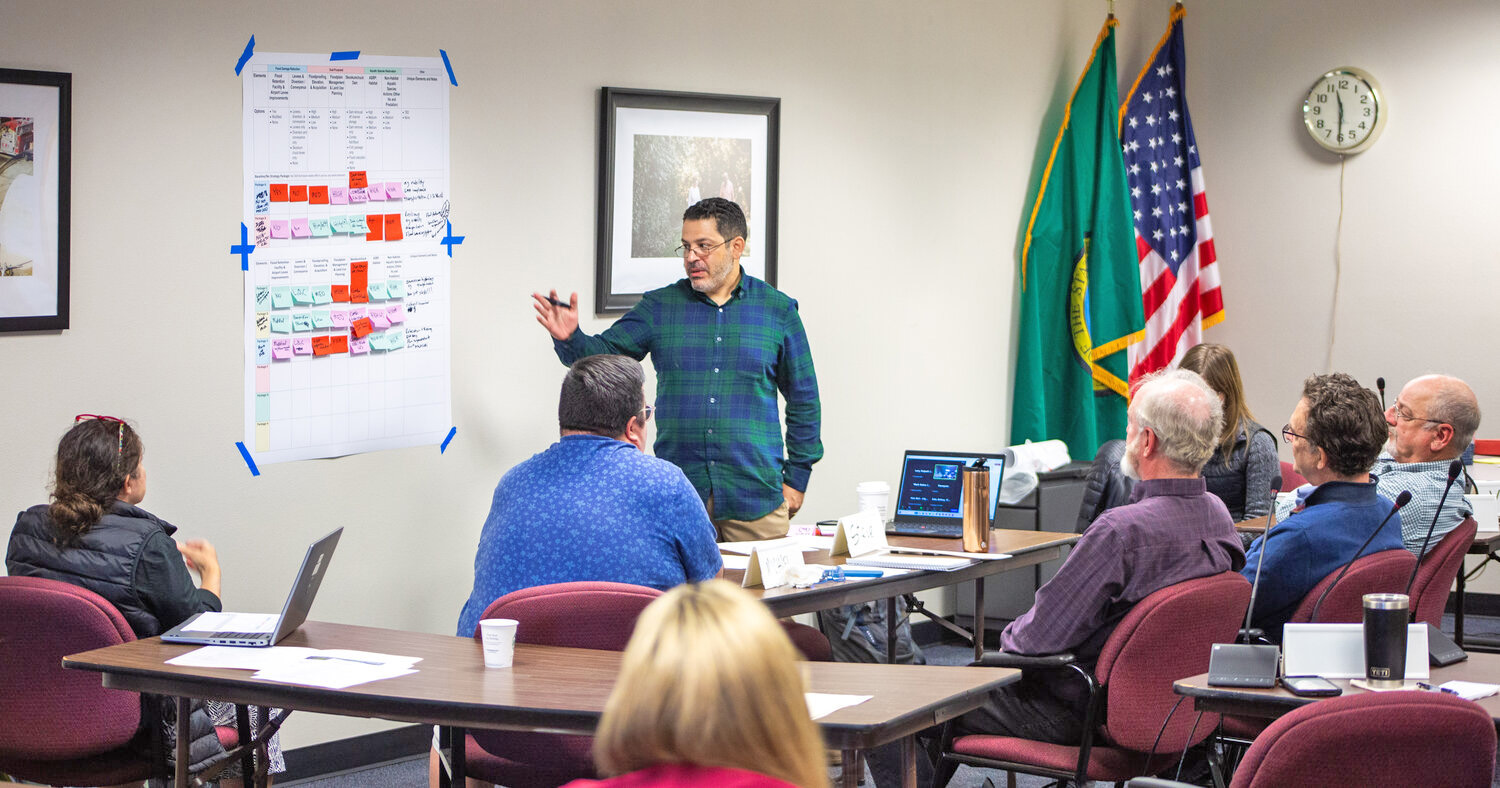
Our Work
The Chehalis Basin Strategy supports safe communities and healthy habitats across the region by creating solutions to reduce flood damage and reverse the loss of aquatic species like salmon. We focus on projects that benefit both people and aquatic life at the same time, and provide positive net benefit across the entire Basin.
Protecting Homes, Businesses, and Community Infrastructure from Flood Damage
- Began working with eight residents to elevate their homes and protect their property from flood damage.
- Funded two voluntary property acquisitions to move families out of harm’s way from Newaukum River flooding.
- Established a new working group with representatives from local jurisdictions and subject matter experts to expand the reach of our community-scale flood assistance program, improve our collaboration with local communities, and focus efforts where they will provide the greatest benefit.
- Helped secure an additional $18.5 million from the Washington State legislature for the North Shore Levee Project in Aberdeen and Hoquiam.
- Protected community infrastructure by collaborating with the Chehalis River Basin Flood Authority and local partners to:
- Begin work on 16 new projects such as pump stations, surface water management, water supply protection, creek restoration, and more.
- Complete five flood damage reduction projects in 2023.
- Work closely with local jurisdictions on proactive and collaborative investment planning for the region’s future, including the Port and City of Chehalis, the cities of Aberdeen, Cosmopolis and Hoquiam joint plan, the City of Cosmopolis, and Grays Harbor Conservation District.
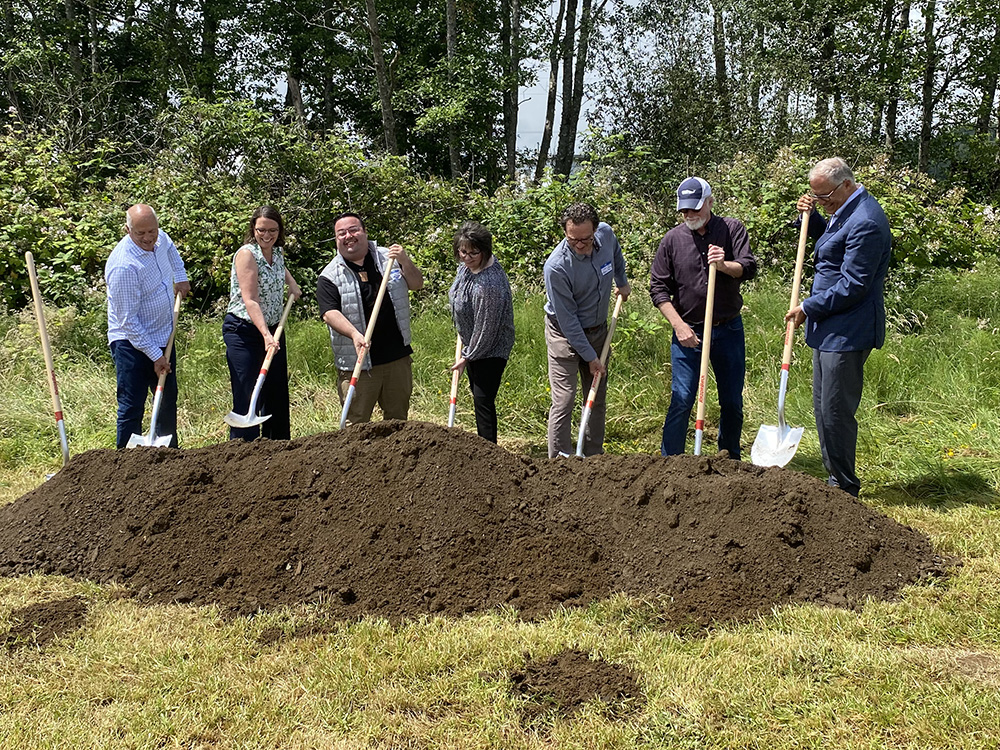
View Project Highlight
Moving Homeowners to Safety
For the past year, OCB staff, along with local land trust Forterra, have partnered with two landowners at risk of flooding from the North Fork of the Newaukum River to voluntarily buy out their properties.
The properties are in a high hazard area, subject to frequent and fast-moving flood events. The properties also faced significant risk of riverbank erosion, which poses a threat to structures, humans, and habitat. Voluntary buy-outs allow these landowners to relocate to a safer location with sufficient compensation for their property.
Interested in learning more about property buy-outs and other resources to help protect yourself and your family from flood risk? Reach out to our team for assistance.
- After years of active construction, completed four large-scale habitat restoration projects on the Skookumchuck, Wynoochee, and Satsop Rivers, and Stillman Creek—totaling $29.8 million invested and 7.6 miles of river restored.
- Completed or initiated construction on 8 projects, including three restoration projects at Blooms Preserve, Riverbend Ranch, and Wildcat Creek (fish passage barrier corrections). Work also included important research on beaver dam analogues and Oregon spotted frog preservation, as well as invasive vegetation control at Spencer Farms and beyond.
- Since 2015, OCB has invested approximately $61.2 million in the Aquatic Species Restoration Plan (ASRP) and has invested approximately $18.1 million for on-the-ground restoration between 2021–2023.
- Brought together 180 community members for a two-day Chehalis Basin Film Festival highlighting local habitat restoration projects, in partnership with Washington Department of Fish and Wildlife (WDFW), Grays Harbor Conservation District, Grays Harbor Stream Team, and Coast Salmon Foundation.
- Supported five community open houses hosted by conservation districts to share information and gather input on proposed on-the-ground projects.
- Reported on a total of 16 ASRP monitoring studies that covered urgent topics such as the impact of climate change on river temperature and flows, freshwater mussel declines and die-offs, resilience strategies to support the Endangered Species Act listed Oregon spotted frog, impacts of non-native fish predation on young salmon, and more.
Launching New Erosion Management Program
- Launched a new program to help public and private landowners address urgent and long-term erosion concerns that threaten public infrastructure, private residential structures, commercial structures, or agricultural land.
- Funded two urgent erosion management projects for the 2023-2025 biennium, with more to come.
View Project Highlight
River Bank Stabilized, Power Plant Protected
For years, erosion along the Chehalis River has threatened Haul Road which hugs the south bank of the river near Grays Harbor. The road is critical to access nearby infrastructure, including the power plant at the Port of Grays Harbor Satsop Business Park.
While long-term planning was underway to address the issue, near-record flooding significantly worsened the erosion in 2022, nearly wiping out the buffer between the road and the river and requiring urgent attention to prevent disaster.
At the request of the Port, the Chehalis River Basin Flood Authority quickly provided initial funding for the project, and in just a few months, the first leg of the project was complete. This immediate action was intended to last for one flood season, while a longer-term solution could be put in place.
Thanks to additional funding from OCB, the Flood Authority, and other local entities who shared their funding, local governments and community members can feel relief and celebrate the recent completion of this longer-term solution to make Haul Road safe again.
During summer of 2023, crews placed log jacks along 500 feet of the riverbank, which will slow river flow, capture wood debris and sediment, and create new habitat for aquatic species. The Grays Harbor Conservation District will monitor the project post-completion.
Studying the Skookumchuck Dam
The Skookumchuck Dam, which sits at the midpoint of the Skookumchuck River and is owned by TransAlta, is over 50 years old, and the power plant it was built to serve will shut down in 2025. In 2021, the Chehalis Basin Board directed OCB to begin studying ways the dam and dam operations could be improved for flood damage reduction and/or fish passage.
- OCB released Phase Two analysis of four potential options for the future of the Skookumchuck Dam, including implications and trade-offs for each possible path.
Watch a Community Webinar Recording
Preparing the Region for Major and Catastrophic Flooding
- Convened a working group to develop a preliminary suite of recommended actions to reduce catastrophic flood damage across the Basin, drawing on input from all local jurisdictions, Tribal governments, and many local organizations and advocacy groups. These recommendations were shared with the Chehalis Basin Board in April 2023, and are currently being considered as part of a larger, long-term plan for the Chehalis Basin.
- Continued evaluating and refining the proposed Chehalis River flow-through dam for flood control, including:
- The project proponent, the Chehalis River Basin Flood Control Zone District, worked to refine the project’s design as well as mitigation plan to further avoid, minimize, and mitigate for impacts identified in the state and federal draft environmental impact statements (EIS). The district also participated in important conversations with state and federal agencies, Tribal representatives, and the local community to discuss the proposed project.
- State and federal EIS processes continued with the Washington Department of Ecology and U.S. Army Corps of Engineers, respectively.
- Partnered with the Flood Authority to provide education on atmospheric rivers and offer web training on the Flood Warning System.
- Added a new river gauge at China Creek as part of the Flood Authority’s Flood Warning System, made up of 13 high water gauges, 300 sensors, and 100 total data collection sites to track weather and water across the region.
The collaborative work being done by the Chehalis Basin Board is a model of complex problem solving. They are tackling two huge challenges of flood damage reduction and aquatic species enhancement. The process needs to continue to move promptly toward creation of an agreed-upon, Basin-wide plan.
Looking Ahead: 2024 and Beyond
2024 promises to be an exciting year to advance the Strategy’s projects and programs as we build on momentum, deepen engagement with Basin communities, and move projects across the finish line. Key projects and milestones for 2024 include:
An Integrated, Long-Term Strategy
- The Board will continue evaluating potential sets of actions for consideration. We’ll conduct significant public outreach in 2024 to ensure input from Basin residents informs this long-term strategy.
Protecting Communities from Flood Damage
- We plan to complete all 10 pilot home elevation and voluntary property acquisition projects in 2024, and then will select and begin work on the next set of home elevations and flood damage reduction projects.
- The flood assistance working group will also wrap up development of its flood assistance framework, integrating key lessons from recently completed pilot projects.
- Through the Chehalis River Basin Flood Authority, we will continue to support local jurisdictions’ floodplain management efforts to reduce communities’ flood risk and lower flood insurance premiums.
- The Flood Authority will continue supporting local jurisdictions with proactive and collaborative investment planning.
- The Flood Authority and local partners will complete five new flood damage reduction projects.
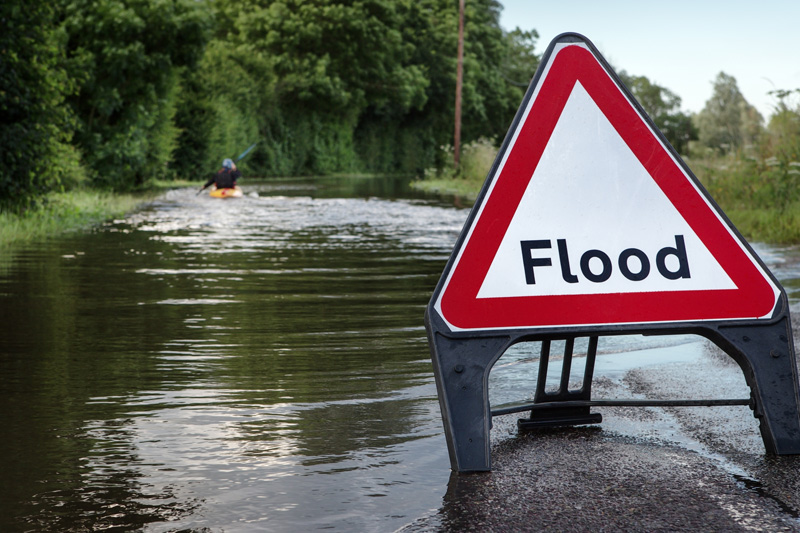
Restoring Habitat for Salmon and Aquatic Life
- We’ll continue making progress on the 16 restoration projects currently underway as part of the Aquatic Species Restoration Plan (ASRP), such as fish passage improvements, reach-scale river restoration, Oregon spotted frog habitat improvements, experimental restoration techniques, and off-channel habitat improvement.
- In addition to ASRP projects, we’ll continue integrating habitat restoration across Strategy programs, including the erosion management program and voluntary property acquisition program.
- We’ll host a two-day ASRP science symposium to highlight outcomes of scientific studies and share lessons learned from real-world projects in the Chehalis Basin and throughout the Pacific Northwest.
- We’ll add a new ecological focus—the Grays Harbor estuary— to the ASRP, expanding restoration project opportunities in Grays Harbor. Estuaries are critical habitats for many aquatic species and especially salmon in all phases of their lifecycle.
The Skookumchuck Dam Study
- We’ll continue our study of fish passage, flood damage reduction, and water rights associated with the Skookumchuck dam.
- With Tribal and other partners, we will gather more information about spring Chinook in the Skookumchuck River, a particularly important and vulnerable run of salmon that is currently being considered for listing under the federal Endangered Species Act.
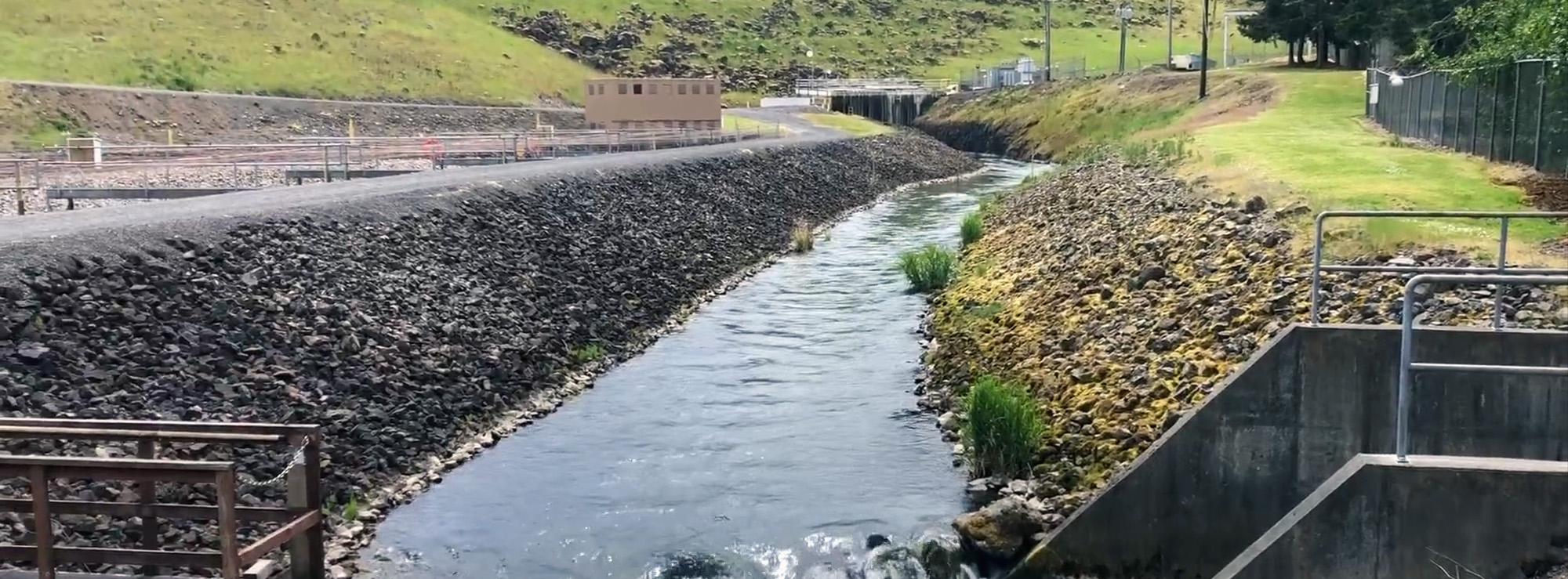
Preparing the Region for Major and Catastrophic Flooding
- Several large-scale infrastructure projects are currently proposed as part of a long-term strategy to protect against catastrophic flooding throughout the Chehalis Basin.
- The Flood Control Zone District will continue to respond to questions and concerns raised by regulators, board members, Tribes, and other stakeholders related to the proposed Chehalis River flow-through dam for flood-control, and will continue conversations with state and federal agencies, Tribal government representatives, and the local community.
- The Flood Control Zone District will share updated project designs and updated mitigation plans in 2024, which are important elements for the ongoing state and federal EIS processes for the proposed project.
- Teams will complete feasibility assessments for the diversion, conveyance and levee concepts that were proposed as a Basin-wide, comprehensive flooding solution without a dam. Major infrastructure elements of this plan will be refined and closely coordinated with habitat restoration efforts across the Basin.
Our People
New Faces on Our Team
This year, the Office of Chehalis Basin hired new team members! We welcomed Stevie Colson as OCB’s new executive assistant, Jennifer Lewis as an Aquatic Species Restoration Plan project planner, and Jeff Zenk as OCB’s new director.
Cindy Malay was promoted to a new role as program operations coordinator.
We also thanked Andrea McNamara Doyle for five incredible years serving as OCB’s first director. Nat Kale stepped up as interim director, ensuring the Chehalis Basin Strategy continued its positive momentum as the Director’s position was being filled.
That’s what I will miss the most — the relationships with so many talented, hard-working people dedicated to making this region healthy and prosperous for generations to come.
Thank You!
The Chehalis Basin Strategy wouldn’t be possible without the collaboration of our incredible network of partners. We are grateful to build on and support the important work you’ve carried for decades in this region.
Thank you to the Confederated Tribes of the Chehalis Reservation and the Quinault Indian Nation, the original and continuing stewards of the Chehalis Basin, whose commitment, leadership, and knowledge keeps this process successful and moving forward.
Thank you to the Chehalis Basin Board for their continued dedication to a safe, healthy, abundant future for this region.
Finally, we want to thank all those who live, work, and recreate in the Chehalis Basin, especially landowners participating in Strategy projects. You each make this region a richer place, and for that, we are grateful.

